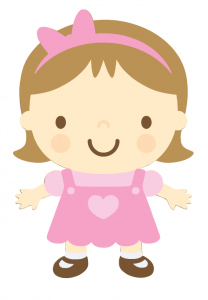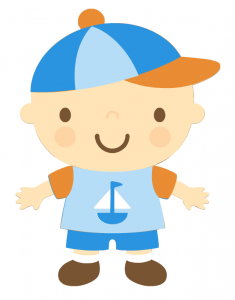Young children are spectacular word learners, adding several new words to their vocabulary every day during the pre-school years. This astonishing feat presents researchers with a major puzzle.
C onsider a young child who sees an object (e.g., a squirrel running across the road) for the first time, as her caregiver points to it and utters a new word, “DAX!” How does the child figure out what the word means? As the philosopher Quine (1960) has noted, there are an infinite number of meanings consistent with a novel word introduced under these circumstances. For example, the word, “DAX,” could be a count noun that designates the category of object (e.g., “squirrel”), but it could also be a proper name that labels the individual object itself (e.g., “Rocky”) or an adjective that picks out one of the object’s properties (e.g., “grey”). The word could even be a verb marking an action category (e.g., “flee”) or a mass noun indicating a kind of material (e.g., “fur”).
onsider a young child who sees an object (e.g., a squirrel running across the road) for the first time, as her caregiver points to it and utters a new word, “DAX!” How does the child figure out what the word means? As the philosopher Quine (1960) has noted, there are an infinite number of meanings consistent with a novel word introduced under these circumstances. For example, the word, “DAX,” could be a count noun that designates the category of object (e.g., “squirrel”), but it could also be a proper name that labels the individual object itself (e.g., “Rocky”) or an adjective that picks out one of the object’s properties (e.g., “grey”). The word could even be a verb marking an action category (e.g., “flee”) or a mass noun indicating a kind of material (e.g., “fur”).
A central goal of research in the Language Development Centre is to understand children’s remarkable success at word learning. We seek to determine how young children learn new words over the course of development, and to specify the precise meanings that young children assign to these words.
Word learning in infants

Infants begin to produce their first words at around one year of age, but recent research indicates that 6-month-olds already understand a number of labels. Among infants’ earliest words are terms for caregivers, such as “Mommy” or “Daddy”. In our lab, we are examining infants’ early understanding of these proper names, as well as proper names for other familiar people (family members and friends). Specifically, we are interested in whether infants understand these labels as words for specific individuals (e.g., whether “Mommy” is a label just for an infant’s own mother) or as terms for entire categories (e.g., whether “Mommy” is a label for any person).
Acquiring a lexicon involves learning words both for individuals (proper names) and for categories (count nouns). Crucial to this learning is discovering that words of both types can apply to the same object (e.g., one dog can be labeled both “Fido” and “dog”). It is not yet well understood when and how infants initially accomplish this learning. To this end, we are exploring infants’ early knowledge of both proper names and count nouns for their family pet.
Word learning in children

In our lab, we are also investigating how toddlers, preschoolers, and school-aged children understand object words, in particular words for individuals (proper names) and words for categories (count nouns). In some of our studies, the focus is on determining how children apply these words to objects (e.g., dogs, trucks) that experience various sorts of transformations (e.g., growth, metamorphosis, part replacement). We are interested in discovering the conditions under which participants judge objects to persist through such changes, both as the same individual (e.g., as Fido) and as a member of the same category (e.g., as a dog). Our aim is to illuminate children’s knowledge of words for individuals and categories, as well as how knowledge of the two types of words is related.
In other studies, we are investigating how children understand words for abstract individuals, such as brand names that indicate the producers of particular categories of objects (e.g., “iPhone”, “Band-Aid”). Our goal is to determine when and how children first master words of this type and how this mastery is related to their knowledge of count nouns that label the associated categories (e.g., smart phones, plastic bandages).